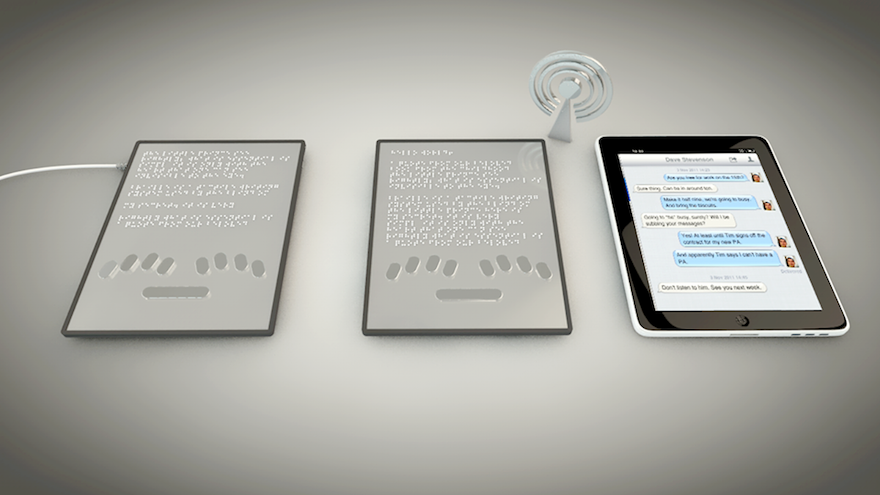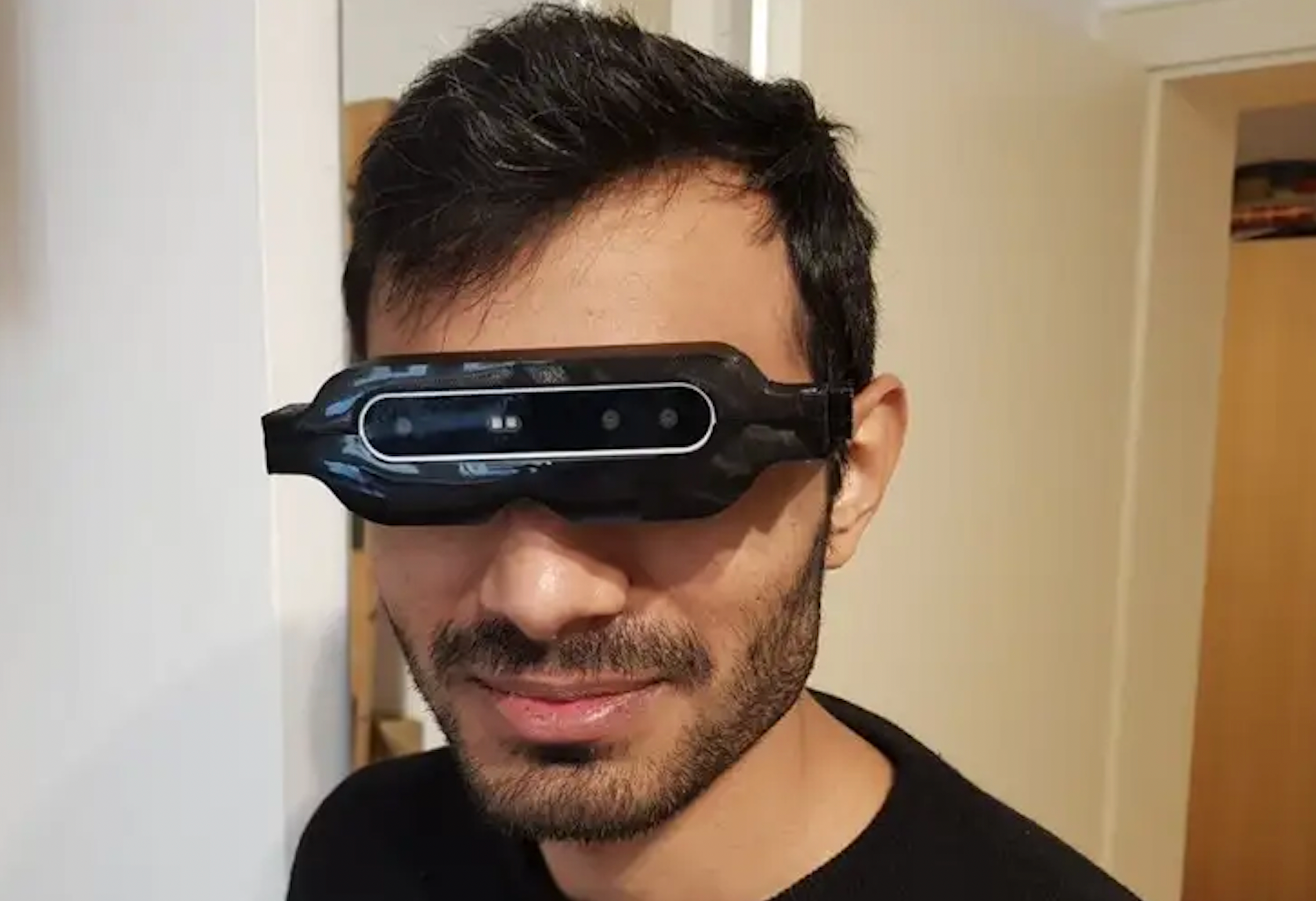Assistive Technology for the Blind: Innovations to Transform Lives
Assistive Technology for the Blind: Innovations to Transform Lives
Blog Article
Discover Cutting-edge Devices Developed for the Visually Impaired
The advancement of ingenious devices for the visually damaged stands for a substantial advancement in access and independence. Technologies such as smart glasses with AI abilities and mobile applications designed to supply auditory summaries are reshaping day-to-day experiences for customers.
Smart Glasses for Navigating

Smart glasses created for navigating are changing the means aesthetically impaired individuals communicate with their atmosphere. These sophisticated devices utilize a mix of camera technology, expert system, and acoustic comments to supply real-time information regarding environments. By employing obstacle detection systems, clever glasses can alert individuals to prospective dangers, making it possible for much safer mobility in both familiar and unfamiliar settings.
The integration of GPS technology even more boosts navigating capacities, permitting individuals to receive acoustic instructions as they move. This hands-free approach not just promotes independence yet additionally empowers aesthetically damaged people to navigate metropolitan landscapes with boosted confidence. In addition, lots of smart glasses are equipped with attributes that identify spots and road indications, offering contextual details that improves the user experience.
In addition, the advancement of these devices is continuously advancing, with firms working to enhance the accuracy of object recognition and broaden the array of navigational functions. As smart glasses become much more affordable and available, they hold the possible to significantly change life for visually damaged users. Eventually, these innovative devices represent a critical action toward inclusivity, offering improved flexibility and a greater sense of freedom for individuals browsing the globe around them.

Mobile Apps for Daily Living
Exactly how can mobile applications improve the daily lives of visually damaged individuals? Mobile apps are reinventing the means visually impaired users navigate their environments, handle daily tasks, and accessibility info. These applications provide essential assistance via different capabilities, cultivating self-reliance and boosting lifestyle.
Several innovative mobile apps are developed particularly for everyday living. Apps like Be My Eyes connect visually damaged individuals with sighted volunteers through video clip phone calls, permitting them to get real-time aid with tasks such as reading labels or navigating unfamiliar areas. Seeing AI, developed by Microsoft, makes use of fabricated knowledge to define surroundings, read message, and recognize objects, efficiently changing a smartphone into a powerful device for daily help.
Additionally, navigation applications tailored for the visually damaged, such as Aira and BlindSquare, provide audio-based instructions and environmental information, allowing customers to traverse their environments securely and confidently. Beyond navigation and instant aid, mobile applications also sustain company and job management, with attributes that assist users set suggestions, produce order of business, and track visits. In recap, mobile applications act as indispensable sources, encouraging visually impaired individuals to lead more independent and fulfilling lives.
Wearable Technologies for Aid
Empowerment through innovation is progressively evident in the world of wearable gadgets made to help aesthetically impaired people. These innovative tools incorporate perfectly right into day-to-day life, enhancing navigation and offering necessary responses to customers. Clever glasses outfitted with cams can read and acknowledge faces message out loud, enabling individuals to communicate more confidently in expert and social setups.
One more significant advancement is using haptic comments systems in wearable gadgets. These systems use vibrations or various other responsive signals to convey details regarding the user's setting, such as challenges or changes in terrain, boosting flexibility and safety and security. Wearable modern technologies additionally include wristbands that connect to smartphones, alerting users to notices through refined vibrations, therefore improving connection without reliance on visual signs.
As these innovations continue to evolve, they are not just enhancing self-reliance for visually damaged individuals yet likewise promoting a higher sense of inclusion in culture. By connecting the space in between difficulties faced in day-to-day living and the potential for autonomy, wearable innovations work as critical tools in the quest for equality and empowerment for those with aesthetic disabilities.
Audio Summary Devices
Audio summary devices play a vital function in boosting ease of access for aesthetically impaired people, giving them with the capacity to engage with visual media. Braille displays and notetakers. These tools use narrated summaries of key visual components in movies, tv programs, and live efficiencies, making certain that users can totally comprehend the context and feelings shared via visuals
Audio description can be integrated into various platforms, consisting of streaming services, movie theater screenings, and live movie theater. Several popular streaming services now consist of audio description as an ease of access function, permitting visitors to select it easily. In addition to traditional media, specialized apps likewise exist, offering audio descriptions for art great post to read exhibitions, museums, and various other social occasions.
The performance of audio summary depends upon the skill of the narrators, that must share aesthetic information succinctly without diminishing the original audio. Innovations in this area are also leading the means for even more personalized experiences, where users can readjust the degree of detail and pacing according to their preferences.
Braille Innovations and Instruments
Braille gadgets and advancements have actually significantly changed the means visually impaired individuals communicate with text and info. Modern innovations have actually led to the growth of flexible tools that enhance literacy and freedom among users.
Moreover, portable Braille notetakers incorporate typical Braille input with modern-day capabilities, promoting note-taking, organizing, and file editing on the go. Braille displays and notetakers. These compact tools commonly include text-to-speech look at here abilities, linking the space between Braille and acoustic info
On top of that, cutting-edge Braille printers have actually arised, enabling users to produce Braille tags, papers, and educational materials successfully. This access promotes better involvement in specialist and instructional atmospheres, ultimately advertising inclusivity.
Furthermore, research study into wise Braille modern technologies proceeds to expand. Instruments that integrate synthetic knowledge are being checked out to provide real-time navigating find this help and contextual details, improving the customer experience in diverse setups. Generally, these innovations show a dedication to empowering aesthetically damaged individuals via innovation, guaranteeing they can quickly access and involve with the globe around them.

Verdict
The development of innovative tools for the aesthetically impaired considerably boosts freedom and quality of life. These modern technologies not just foster greater addition but likewise advertise autonomy in everyday tasks, eventually adding to a more easily accessible and equitable society for visually damaged individuals.
As wise glasses become much more cost effective and accessible, they hold the prospective to dramatically transform daily life for visually damaged customers. Mobile apps are transforming the method aesthetically damaged users navigate their atmospheres, handle day-to-day jobs, and accessibility information. Apps like Be My Eyes link visually impaired customers with sighted volunteers via video calls, allowing them to get real-time help with jobs such as reviewing tags or browsing strange rooms.Additionally, navigation apps tailored for the visually impaired, such as Aira and BlindSquare, offer audio-based directions and environmental information, enabling users to traverse their surroundings securely and with confidence.The advancement of innovative devices for the aesthetically damaged substantially improves self-reliance and top quality of life.
Report this page